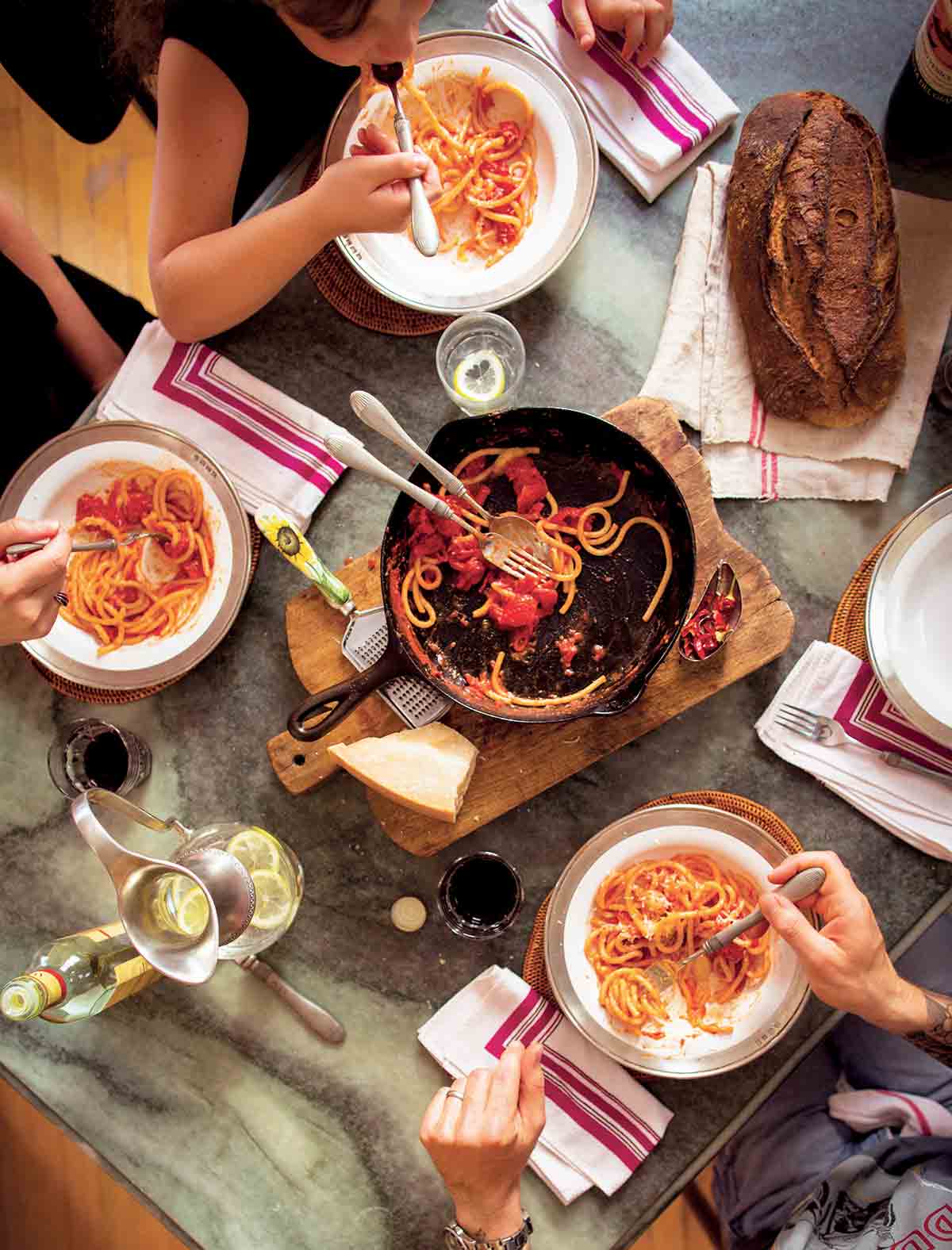
A red sauce that comes together with ease and makes you grateful to exist is something we all require. This is it. Simple enough for weeknights. Sufficiently impressive for entertaining.

Why Our Testers Loved This
“Simple, quick, and delicious.” “Elegant in its simplicity.” “This is not Sunday gravy but it sure as heck is good.” “I’m filing this recipe away to make again…repeatedly.” That’s what folks are saying about this sugo recipe.
What You’ll Need to Make This
- Whole peeled tomatoes–The flavor of your sugo di pomodoro is going to be dependent on the quality of tomatoes you use. If you can find San Marzano tomatoes, we recommend using them.
- Red pepper flakes–These are optional but add a wonderful spiciness to the sauce.
- Fresh basil–We recommend using fresh basil for the best flavor in your sauce. However, in a pinch, you can substitute 1 tablespoon of dried basil.
How to Make This Recipe
- Sauté the onion in oil until softened. Add the garlic and cook until it begins to brown. Stir in the pepper flakes, if using.
- Dump in the tomatoes and season with salt and pepper. Cover and simmer until slightly reduced.
- Stir in the basil leaves.
Common Questions
For an easy inexpensive meal, simply toss your tomato sauce with pasta or gnocchi and shower it with Parmesan cheese. For a heartier meal, add some beef meatballs. You could also use this sauce for making Eggplant Shakshuka.
Sprinkle in a pinch of baking soda, which will help to neutralize the acid. Alternatively, a pinch of sugar will also help to balance the flavor.
Helpful Tips
- If your finished sauce is too runny, simmer uncovered for an additional 15 to 20 minutes or until it’s reduced to your desired consistency.
- The recipe makes enough sauce for a pound of pasta.
- Leftover sauce can be stored in the refrigerator in a sealed container for up to five days or frozen for up to six months. Thaw in the refrigerator before reheating.
- This recipe is suitable for gluten-free, dairy-free, or vegan diets.

Write a Review
If you make this recipe, or any dish on LC, consider leaving a review, a star rating, and your best photo in the comments below. I love hearing from you.–David

Sugo di Pomodoro ~ Authentic Italian Tomato Sauce
Ingredients
- One (28-ounce) can whole peeled tomatoes
- 2 tablespoons extra-virgin olive oil
- 1/3 red onion, cut into medium dice
- 3 garlic cloves, finely chopped
- Pinch crushed red pepper flakes, (optional)
- Sea salt and freshly ground black pepper
- 2 tablespoons torn fresh basil leaves
Instructions
- If you prefer a smooth red sauce, dump the tomatoes and their juices in a food processor or stick an immersion blender in the opened can and purée the tomatoes until smooth. If you prefer a red sauce with a chunky consistency, don't do anything to the tomatoes just yet. Instead, wait and break the tomatoes up in the pan with a wooden spoon.
- In a large saucepan, warm the oil over medium heat until hot. Add the onion and cook until softened, 5 to 6 minutes. Add the garlic and cook for 2 to 3 minutes, until it begins to brown. If your prefer your red sauce with a little kick, add the red pepper flakes.
- Dump in the tomatoes and season with salt and black pepper. Reduce the heat to medium-low and simmer, stirring occasionally, for about 30 minutes, until the sauce is reduced slightly. (If you did not purée the tomatoes, use a wooden spoon to break them into pieces while they cook.)
- If the sauce is still a little runnier than you prefer, uncover and simmer until reduced to the desired consistency.
- Stir in the basil and remove the pan from the heat. You'll have sufficient red sauce to toss with a pound of pasta.
Notes
- Fixing acidic sauce–If your tomato sauce tastes too acidic, sprinkle in a pinch of baking soda.
- Storage and freezing–Leftover sauce can be stored in the refrigerator in a sealed container for up to 5 days or frozen for up to 6 months. Thaw in the refrigerator before reheating.
- Dietary–This recipe is suitable for gluten-free, dairy-free, or vegan diets.

Nutrition
Nutrition information is automatically calculated, so should only be used as an approximation.
Recipe Testers’ Reviews
I’m filing this sugo recipe away to make again…repeatedly. I’d be selling the recipe short if I emphasized only how easy it is to make and how quickly it gets dinner on the table. This is a high-quality sauce from simple ingredients that’s elegant in its simplicity.
I had all the ingredients on hand except for basil, which I didn’t grow this year but was easy enough to procure. In a pinch, I’d add dried basil to the puréed tomatoes if I knew I didn’t have access to fresh leaves.
Using an immersion blender to purée tomatoes for sauce at the outset was not something that had occurred to me before. It worked great. Usually when I start with whole tomatoes, I have trouble getting them broken down to my satisfaction as they cook. This way they were mostly smooth but with a few chunks—custom puréed.
The first two plates of pasta were sauced well enough, but once seconds had been dished up, the leftovers packaged for the refrigerator were shortchanged sauce-wise.
In the future, I think I would only make 10 or 12 ounces of pasta for the amount of sauce. It probably should be diluted with some water to sauce an entire pound of spaghetti adequately. I used the hot pepper flakes and San Marzano tomatoes.
I must say, as an Italian, that this sugo recipe is pretty good. It’s quick and easy enough for a weeknight supper.
It’s not the Sunday “gravy” that cooks for hours with all the meats. (Sorry, I hate to bring up the sauce or gravy thing. I’m just this Italian guy who loves food and cooking. I’m not an eloquent writer but I call something what it is.) This is not Sunday gravy, but it sure as heck is good.
This is a great sauce to make for a quick pasta dinner or to use for something else, like a Parmesan of eggplant or chicken.
I placed the tomatoes in batches in the food processor and just pulsed them until it was still kind of chunky, as I wanted to keep some texture.
I’d suggest removing the tomatoes from the canned juices and setting aside the liquid. Then you can add the liquid as needed to get the consistency you like while you’re cooking.
I prefer San Marzano tomatoes because of the taste, and the purée they’re packed in results in a less runny sauce. But any quality product will work.
The nice thing about this sugo recipe is it does not require a lot of time—from start to finish; dinner can be on the table in just a little over an hour. I made a double recipe to allow for leftovers. I made a batch of meatballs to add to leftovers and lunches.
I’ve made this recipe several times now, and the last time, I quadrupled it and froze it for quick dinners. This is a versatile sauce that lends itself to many adaptations, and I highly recommend it.
This sugo di Pomodoro is identical to a basic marinara sauce recipe that I’ve been making for years. It’s simple, quick, and makes a delicious sauce that can be paired with any type of pasta.
I used a red onion, as specified in the recipe, but any type of onion or even a few shallots will do if that’s what you have on hand. An immersion blender works very well for puréeing the tomatoes and is a whole lot less complicated than using a food processor. Be sure to taste the sauce at the end to determine if additional seasoning is needed.
You can cook your pasta during the last minutes of simmering the sauce so that they are done at more or less the same time. Cook the pasta for one minute less than it says in the instructions on the box so that you can add your pasta to the saucepan and cook the pasta with the sauce for a few minutes to get the perfect blending of the two.
The recipe makes enough sauce for a pound of pasta that will nicely serve four or five. Because of the sauce’s simplicity, it’s highly dependent on the quality of the tomatoes that are used. The best choice will always be canned San Marzano tomatoes grown in the small town called San Marzano sul Sarno near Naples, Italy.
What makes these tomatoes especially flavorful is that they’re grown in volcanic soil in the area below Mount Vesuvius. San Marzano tomatoes grown in this region and that are in compliance with Italian law will have the “DOP” (Denominazione di Origine Protetta) emblem on the label. They are well worth the extra cost and are the only canned tomatoes I keep in my pantry. I buy them by the case via mail order from an Italian specialty shop on Arthur Avenue in the Bronx.
This basic Italian tomato sauce was very fragrant while simmering. I used my immersion blender because we like a smoother texture. I had almost three cups of sauce that I tossed with a pound of cooked spaghetti. It made four ample servings.
I think this sauce could be frozen to have on hand for a quick pasta dinner any night. Spicy or sweet sausage could be added to the sauce. I’ll try that next time and top it with lots of Parmesan cheese!
A perfect, no-fuss Italian tomato sauce for any time of year. I particularly love this recipe in summer when basil is growing like crazy in my garden and can shine in this simple sauce.
This recipe barely takes any more time than opening up a jar of store-bought sauce and heating it up. Yet for the investment of a few additional minutes, you’ll be rewarded with a delicious, fresh sauce that’s sure to impress.
I used an immersion blender for my tomatoes before cooking. I went for slight chunks of tomato but a saucy consistency. After adding the blended tomatoes to the pot, I allowed the mixture to cook for the 30 minutes stated in the recipe; at this point, the sauce was still slightly runny for my taste, so I removed the lid from the pot and allowed the sauce to simmer an additional 20 minutes until it had thickened a little more.
It fed four people with enough left over to make the spaghetti pie recipe on the site.
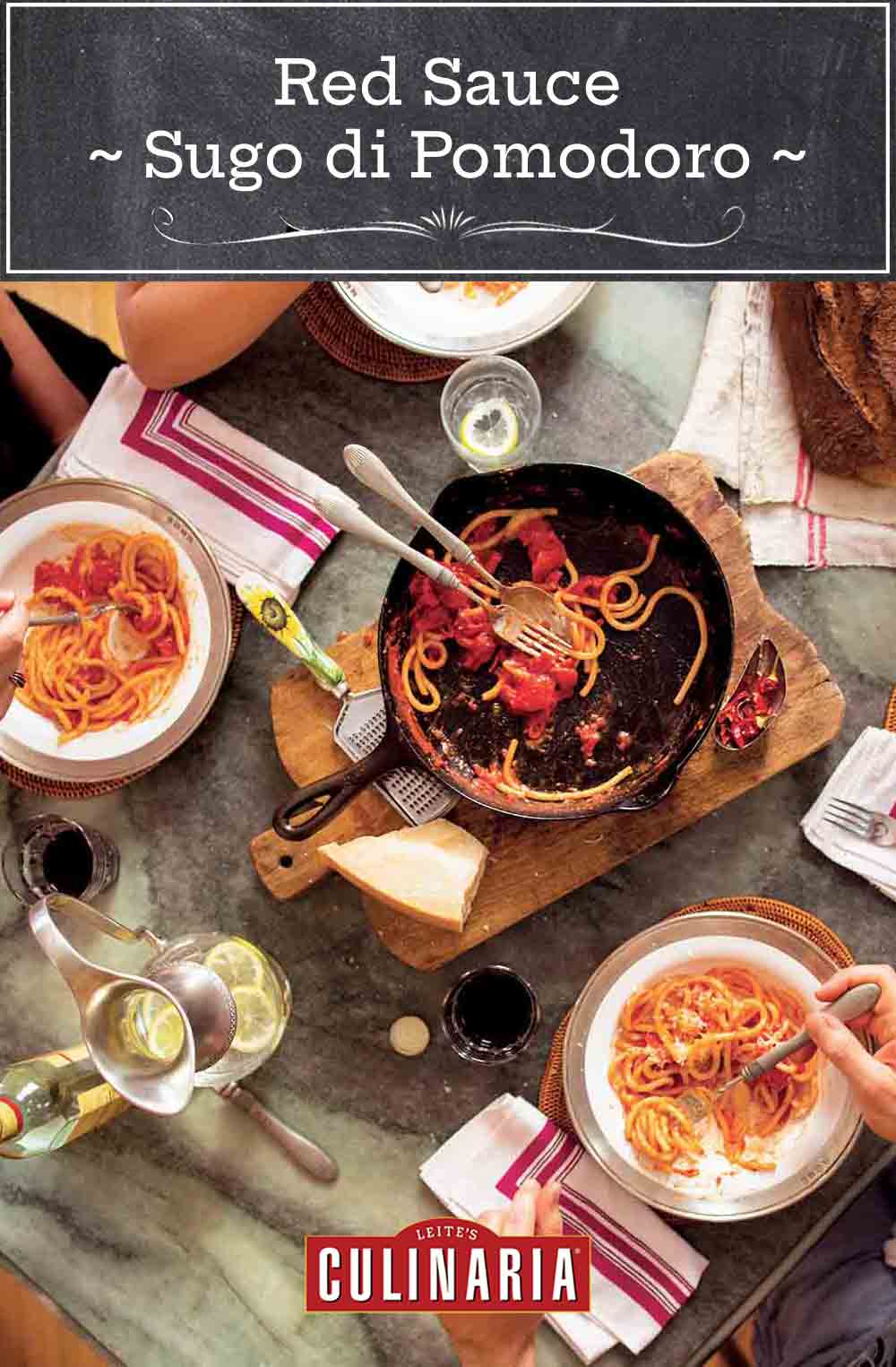
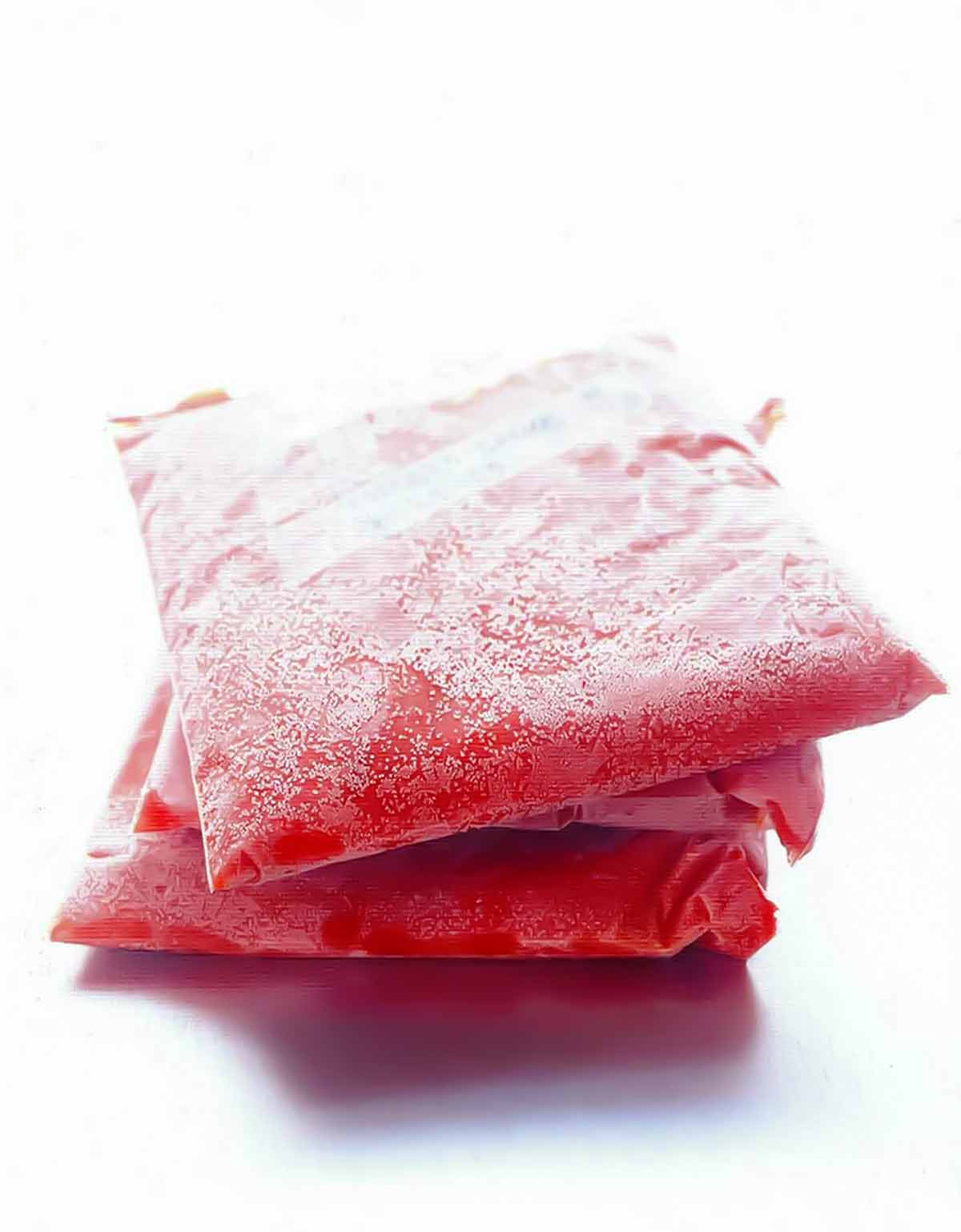
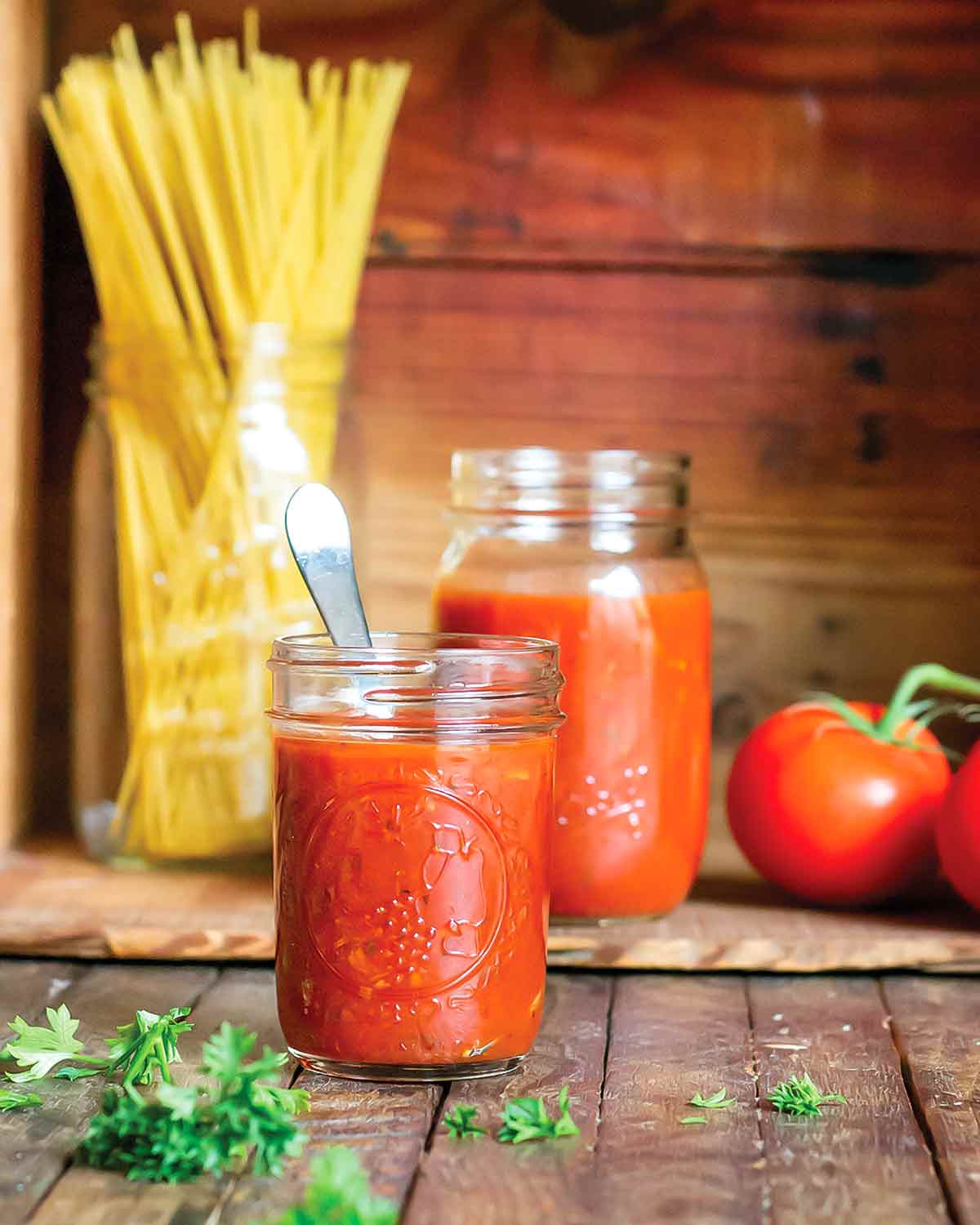





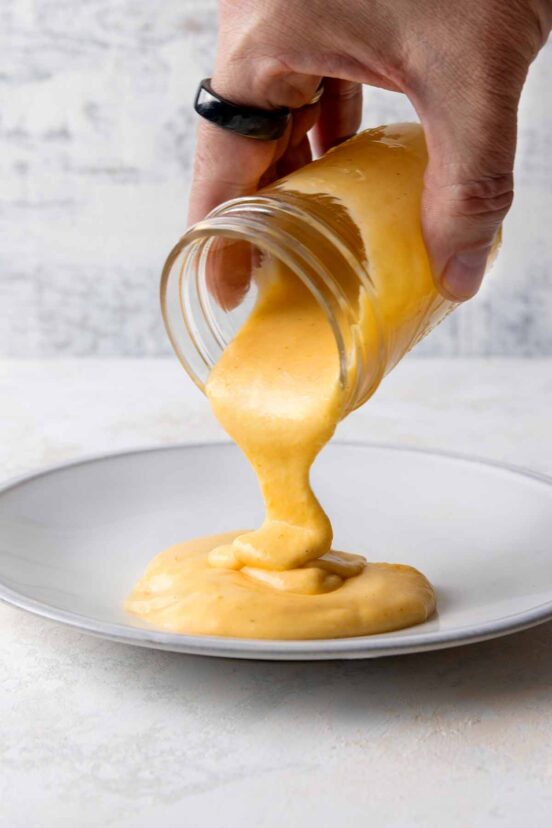










Can this be further condensed spiced adjusted and used as pizza sauce?
Bobbie, we haven’t tried it this way, so we can’t say for certain, but I don’t see any reason why it couldn’t. If you do try it, please let us know how it turns out!